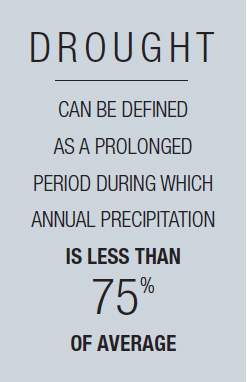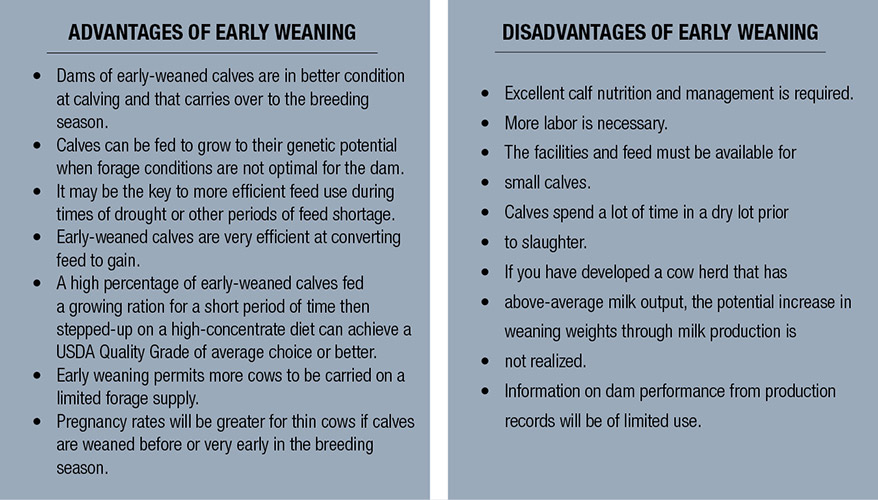Drought appears to be a cyclic event, and unfortunately drought conditions are present this year. Drought can be defined as a prolonged period during which annual precipitation is less than 75 percent of average. Annual forage production is a function of precipitation and soil moisture conditions. Low annual precipitation, or timing of precipitation, lowers soil moisture conditions and its ability to sustain annual plant growth. The key to surviving drought is to have a drought management plan.

All basic drought plans must keep in mind two fundamental objectives:
- Minimize damage to rangeland resources during and after drought
- Minimize economic loss
Trying to maintain whole herd production during drought using purchased feeds can be financial suicide. One must employ sound strategies to reduce forage demand during drought. One must also develop key “trigger events” or calendar dates, designed to evaluate current drought conditions. These triggers must be early enough to allow a drought management plan to take effect. Keep in mind there are three key components of a drought management plan:
- Livestock Inventory
- Use of existing forage resources
- Alternative feeding programs
Adjusting Livestock Inventory
Herd animals must be closely evaluated to determine which animals should be culled. Having a depopulation plan allows one to manage a productive core herd through a drought period. If cow numbers need to be reduced, consider the following:
- Only take cow/calf pairs to grass.
-
- Non-pregnant cows or cows that lost their calves at calving should be culled. Therefore, only cows that have the potential to wean a calf are turned out to pasture.
- Cull cows that have been identified as poor mothers, have unsound udders, teats, feet and legs, bad disposition and other physical problems.
- Closely evaluate productive and non-productive females in your herd. Use at least two years of individual cow records to identify cows that have consistently weaned calves that rank in the bottom 10-25% of your herd. These should be candidates for culling.
- Check cows for pregnancy as soon after the breeding season as possible. Experienced ultrasound technicians are about 100% accurate on a 30-to-35-day old fetus. Individuals experienced in rectal palpation can detect pregnancy in cows where the fetus is between 45 and 60 days. Accuracy is critical as you do not want to sell a pregnant cow that was palpated as not pregnant.
- Critically evaluate your heifer replacement program. Although these heifers require less total feed than cows, they need higher-quality feed because they still have a nutrient requirement for growth. In addition, if conditions exist during the summer where hay supply is reduced due to the dry conditions, higher-quality feed is also needed for replacement heifers this fall and that hay may be expensive.
- There may be females in the herd that are suckling a calf but the intent for these females is to cull them after the calf is weaned. If the pasture and forage resources are limited, consider early weaning the calf at 45 to 90 days of age and selling the cow. Early weaned calves are efficient at converting feed to gain. It is more economical and efficient to feed the calf directly than to feed the calf through feeding the cow during drought situations. Design a ration for the calf that is palatable, high in protein (15-16%), dust free and cannot be sorted. Once the calf is weaned, the cow can be culled or maintained on a lower-quality ration, especially when the breeding season has been completed.
- Consider culling older bulls immediately after breeding season.
Early Weaning
Take advantage of early weaning programs. For every 2.5 days a calf is weaned, the forage saved is equivalent to 1 dry cow day. Weaning calves at 45 to 60 days of age is a sound management strategy that should be included in a drought plan. Weaning calves at 3 to 5 months of age may also be a viable alternative if forages are scarce in the latter part of the grazing season.

Manage Existing Forages
Understanding annual forage production under limited precipitation is critical. A drought management plan should ensure minimal damage to rangeland resources. Carrying capacity should be adjusted based on the amount of residual forage and anticipated current years growth. If you have limited precipitation during the months of March through May, annual forage production will be reduced. Limit turnout numbers by employing the culling techniques described above. Working with your Livestock Feeding Consultant, identity limiting nutrients and only supplement to maintain performance on your core herd. Aside from culling animals, consider some of the options to extend the grazing season:
- Delay turn-out. Utilize carryover hay to the core herd
- Split large pastures with temporary cross-fences. This would concentrate cattle and would allow better utilization of existing forage
- Do not be tempted to overgraze existing pasture. Recovery will be slow and subsequent annual forage production will be reduced for several years
Materials within this paper were adapted from “Drought Management Plan for You Cow/Calf Enterprise”, Dr. Rick Rasby, Professor of Animal Science, University of Nebraska-Lincoln

